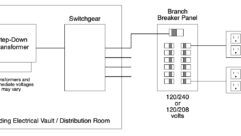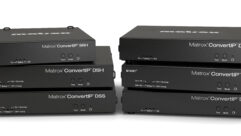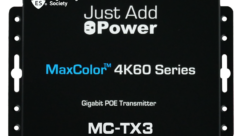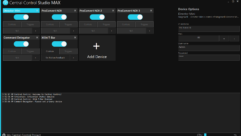IP-based Power Management Control
Mar 24, 2011 5:14 PM,
By John Benz, marketing manager, Panamax/Furman
The ability to access individual installed electronic components—either through a local area network or over the Internet—for direct function control or status/data monitoring is a growing trend, and the power management category is not being left behind. For installers, IP control and monitoring drastically reduces time-consuming service calls that cut into their bottom line, while allowing them to provide unprecedented levels of customer service to their clients.
What can IP-addressable power management do for you?
Most integrators are aware of the benefits of specifying power management into every installation. You know that sensitive and expensive AV components need to be protected from surges and spikes to ensure peak performance and maximize component longevity. What you might not know is that there are solutions available that can be integrated into a control system or networked to combine these benefits with remote control and monitoring.
The blending of power management and remote access seems a natural evolution when you consider the hard reboot, which consists of simply unplugging electronic equipment from the wall and then plugging it back in. In the installer’s troubleshooting bag of tricks, this simple act is still the most dependable problem solver, and it has the advantage of being a quick fix that takes little time or know-how to accomplish. However, it also has to physically be done—often meaning installers must be there in person.
One key benefit of remote control for power management devices is the ability to hard-reboot connected equipment remotely to instantly resolve lockups, bad device handshakes, and other issues from a computer or even a mobile phone, and thus eliminate the need for rolling a truck or sending a technician for a service call. In addition, reboots can be automated for modems and routers to allow outlets to automatically power-cycle when an Internet connection is lost.
Other benefits of power management solutions with remote access include scheduling commands for powering up and powering down equipment, in addition to the monitoring of incoming voltage in realtime or over history. Email alerts can also be issued when systems have lost power, or if power fluctuates outside of its safe range, allowing installers to address these issues immediately and ensure that their customers’ systems are functioning properly—often before the customers even know there’s an issue.
The end result is reduced service calls for the installer, and increased satisfaction for the client. Reducing service calls not only lowers the cost of labor and fuel, but it saves time that can be spent on other jobs. In fact, these kinds of technologies represent possible recurring revenue opportunities as integrators can add monitoring and remote access to service contracts.
IP-based Power Management Control
Mar 24, 2011 5:14 PM,
By John Benz, marketing manager, Panamax/Furman
For the client, system downtime may not be an option. Consider mission-critical applications in the government sector. If the system goes down, there is no time to wait around for an installer to make a service call. With remote access, installers can respond to an issue immediately and have their clients up and running again in no time.
Direct connection vs. cloud-based solutions
While not all installation professionals are aware of remote power management, the solutions themselves are not completely new. IP-based solutions that provide a direct connection to the device over Telnet or HTTP, or that integrate into an automation system, have been around for the past few years. Although these products offer all the benefits mentioned above, they can be difficult to set up. Establishing communication between the installer and the client device is a complicated process that often requires an IT specialist or networking-savvy employee to set up a static IP address and configure the facility’s firewall and other security settings.
To meet the demand for a more simple setup process, in addition to calls for increased security and access from anywhere via a web-based device, the next generation of IP-based power management control solutions are embracing hosted, cloud-based technology. Cloud-based solutions are truly plug-and-play, leaving the difficult aspects of device setup to the manufacturer. With these solutions, installers simply plug the unit into an active Internet connection and add the device to an account with the manufacturer (a process no more complicated than setting up a web-based email account), and they are ready to go.
Installers can go to the website from any Internet-enabled device and control the components plugged into the unit. Since innumerable devices can be added to a single account, installers can easily monitor multiple installations across multiple locations. It’s also easier for the manufacturer to improve the interface, features, and benefits of the software without the need for firmware pushes, hardware updates, or limits from onboard memory. Cloud-based systems also provide a browser GUI out of the box and can be accessed from any web-enabled device, including tablets and smartphones.
Currently, there are misconceptions with cloud-based solutions when it comes to security. Many IT managers are leery of sending data from their facility to—or providing control from—a remote server. In truth, however, a cloud-based server using modern encryption methods on both the server side and in communications between devices can provide a greater level of security than static IP devices. This is because they are able to be configured without the firewall/access point concerns encountered in setting up a static IP device.
Looking forward, cloud-based solutions will increasingly incorporate energy management features. Capabilities such as monitoring energy and cost in real dollars, in addition to setting energy budgets, will help companies with green initiatives meet their goals. As IP control and monitoring moves forward, the power management industry will continue to move with it, providing even more benefits to professional installers and their clients.










